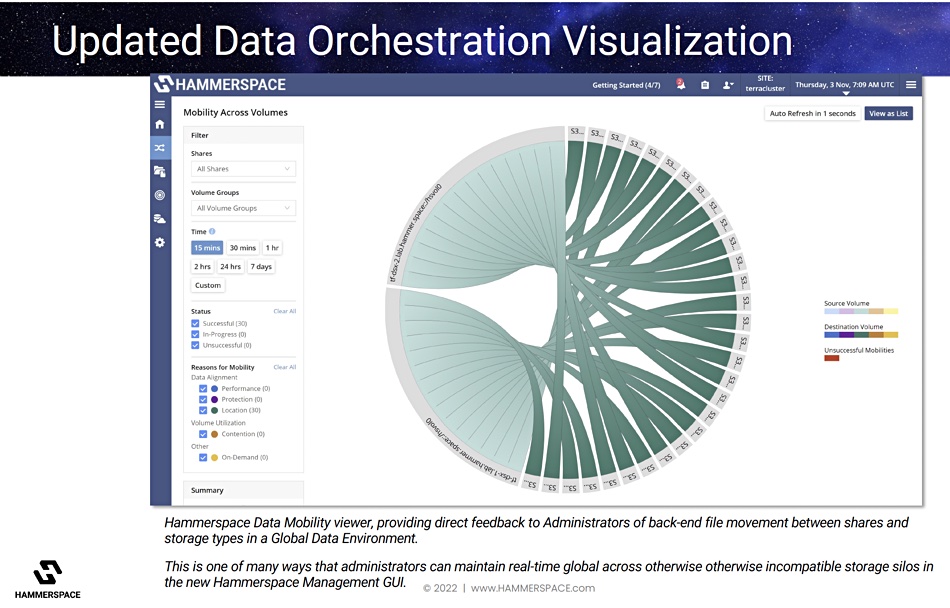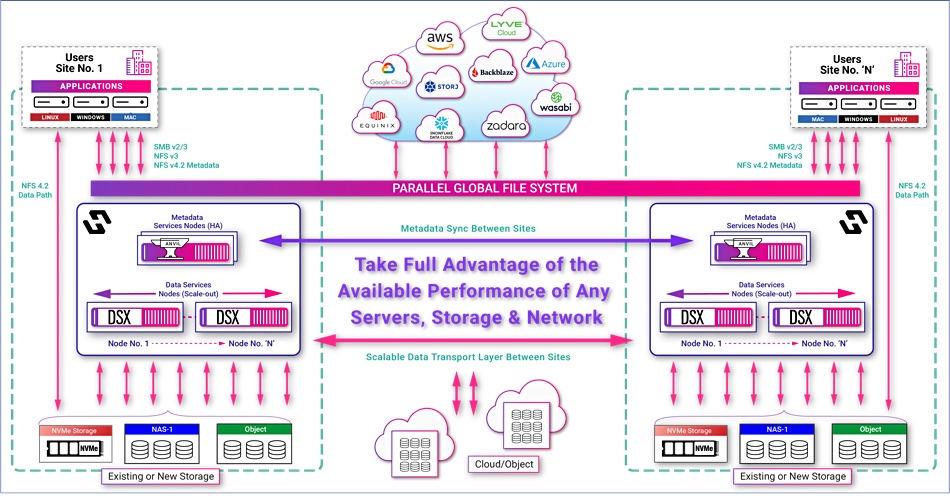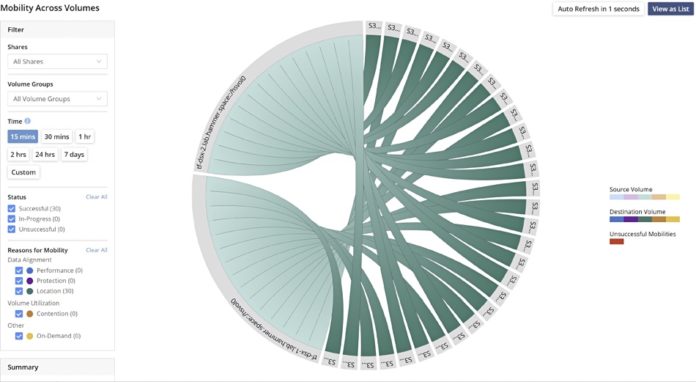Hammerspace Global Data Environment (GDE) users can access files from servers, across datacenters, and global Internet links, and Hammerspace has upped the speed of all three stages, with parallel NFS, RDMA, and metadata and data path separation.
GDE 5.0 adds higher performance at server level, with near maximum IO subsystem speed, across interconnects in data centers, saturating Ethernet and InfiniBand links, and onwards to to the cloud, saturating links at this level too. The server-local IO acceleration applies to bare metal, virtual machines and containerized applications. It says this allows organizations to take full advantage of the performance capabilities of any server, storage system and network anywhere in the world.

Hammerspace CEO and founder David Flynn said in a supplied quote: “Technology typically follows a continuum of incremental advancements over previous generations. But every once in a while, a quantum leap forward is taken with innovation that changes paradigms. … Another paradigm shift is upon us to create high-performance global data architectures incorporating instruments and sensors, edge sites, data centers, and diverse cloud regions.”
The company claims GDE 5.0 changes previously held notions of how unstructured data architectures can work, delivering the performance needed to free workloads from data silos, eliminate copy proliferation, and provide direct data access to applications and users, no matter where the data is stored.

Server level
Hammerspace CTO Trond Myklebust, maintainer for the Linux Kernel NFS Client, said: “Hammerspace helped drive the IETF process and wrote enterprise quality code based on the standard, making NFS4.2 enterprise-grade parallel performance NAS a reality.”
The company’s Parallel Global File System architecture separates the file metadata control plane from the data path and can use embedded parallel file system clients with NFS v4.2 in Linux, resulting in minimal overhead in the data path. It takes full advantage of the underlying infrastructure, delivering 73.12 Gbits/sec performance from a single NVMe-based server, providing nearly the same performance through the file system that would be achieved on the same server hardware with direct-to-kernel access.
When servers are running at the edge they can become disconnected. With GDE, file metadata is global across all sites, and on disconnect local read/write continues until the site reconnects, at which time the metadata re-synchronizes with the rest of the global data environment.
Data center level
File system parallelism and separation of metadata traffic applies at this level as well. GDE 5.0 can saturate the fastest storage and network infrastructures, orchestrating direct I/O and scaling linearly across different platforms to maximize aggregate throughput and IOPS. Hammerspace supports a wide range of high-performance storage platforms that organizations have in place today.
GDE 5.0 adds a 20 percent increase in metadata performance to accelerate file creation in primary storage use cases, and accelerated collaboration on shared files in high client count environments. It also adds RDMA (Remote Direct Memory Access) support for global data over NFS v4.2, providing high-performance access to all data in the global data environment, no matter where it is located.

There are data services nodes, called DSX (Data Service eXtensions) In the GDE. These provide the ability for Hammerspace to parallelize front-side and store-side I/O across the network. DSX nodes handle all I/O operations, replication, data movement, etc., and are designed to scale out to over 60 nodes in a cluster to accommodate any level of performance requirements.
A test showed that with a cluster of 16 DSX servers, the Hammerspace file system hit 1.17 Tbits/second; the maximum throughput the NVMe storage could handle. It did this with 32Kb file sizes and low CPU utilization. Performance scaled linearly and to even higher levels when more storage and networking were added.
Metro, continental and global level
GDE supports AWS, Azure, GCP and Seagate’s Lyve Cloud. V5.0 adds:
- Backblaze, Zadara, and Wasabi support
- Continual system-wide optimization to increase scalability, improve back-end performance, and improve resilience in very large, distributed environments
- New management GUI, with user-customizable tiles, better administrator experience, and increased observability of activity within shares
- Increased scale, increasing the number of Hammerspace clusters supported in a single global data environment from 8 to 16 locations.
Hammerspace says its Parallel Global File System orchestrates data automatically and by policy in advance to make data present locally without users wasting time waiting for data placement. The GDE can send data across dual 100GbitE networks at up to 22.5GB/sec.
It says this level of performance enables workflow automation to orchestrate data in the background on a file-granular basis directly, by policy. This makes it possible to start working with the data as soon as the first file is transferred and without needing to wait for the entire data set to be moved locally. It means data can flow to on-premises servers or in and into the public clouds.
Hammerspace claims it can saturate the network within the cloud when needed to connect the compute environment with applications. An EDA (Electronic Design Automation) test in Azure showed GDE performance scales linearly, making it suitable for compute-intensive use cases. For example, processing genomics data, rendering visual effects, training machine learning models and general high-performance computing.
Download a Hammerspace Technology white paper here to find out more.








